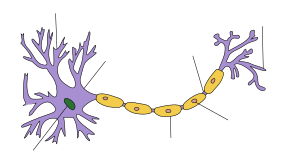More amazing things I’m learning in the BrainSMART graduate program...
Reading is not a natural act for the brain. In other words, there are no existing structures wired into the brain specifically for reading. To read, the brain uses structures meant for other processes. This is a complex task that takes years to perfect. The brains of readers who seem to learn with relative ease have chosen a particular pathway in the brain that works best. However, not all brains choose this route. When that happens we see struggling readers.
The Good News
The good news is that the brain is “plastic,” or changeable throughout our entire lives. With the proper interventions, a struggling reader can become proficient. There are several strategies to help accomplish this, and I have already touched on some in this blog. The issue I would like to address today is fluency and its connection to processing.
The Connection
Researchers have found that a random automated naming (RAN) is a good indicator of future reading success. Students who can quickly and accurately name random symbols, colored shapes, or simple objects are more likely to be successful readers. “Researchers emphasize that when a child lacks skills for automatic naming, comprehension, and speed of word calling, reading suffers” (Nevills and Wolfe 2009). There is a significant difference in reading ability in children who can look at a picture, identify it, determine it’s name, say the name, and move on quickly to the next object, and those children who have difficulty with the task. Processing rate matters.
Why It Matters
Phonological processing is a component of the brain’s rate of processing. Any student, who cannot quickly and accurately perform phonological processing, will not be able to read fluently.
What Can Help
There are several effective ways to help a student become a more efficient processor, and thus a more fluent reader. I will discuss three strategies here.
· Frequent practice with object naming.
· Oral reading that is: guided, repeated and modeled.
· Independent silent reading.
Frequent Practice Naming Objects
Help increase processing speed through object naming practice. Make charts with increasingly difficult sets of items to name. For example, start with familiar objects, and then move on to letters, clusters, and words. Let the student practice with the first chart (Sample of a first chart). Set a timed goal for naming the objects, once the goal is met move on to the next chart. Each chart should be mastered more quickly than the one before. This process primes the brain to “develop facilitated neural networks for rapid identification, naming, disengagement, and movement to the next object” (Nevills and Wolfe 2009).
Oral Reading
Practice, practice, practice. Studies have shown that struggling readers are less likely to achieve the gains of regular readers without extensive reading practice. Oral reading to an adult or another student for 15 minutes, three days a week, will help poor readers in word identification, comprehension, and fluency.
Another practice strategy is rereading. This can be done individually or whole class. It should not take more than five minutes. To begin, the teacher reads a passage for one minute as students follow along in their own copy. The passage can be fiction, nonfiction, poetry, etc. Then students reread the passage silently for one minute. Finally, students take turns rereading the passage with a reading partner. This is repeated every day with the same passage, and then begins over with a new passage the next week.
Independent Reading
Every classroom should have a wide range of reading material available, at appropriate reading levels. Beyond that, every student needs the opportunity to read independently every day. Avoid the “drop everything and read” activity unless teacher direction and follow-up are included. Make sure students are reading books appropriate for their reading level. Engage student interest by selecting three or four students to share what they read at the end of the reading session. This will ensure all students are reading for comprehension, and therefore benefiting from the activity.
Finally
If reading fluency is a predictor of future school success, and processing speed is a predictor of reading success, then teachers must make it a point to help students who are slow processors. Processing and fluency instruction can occur simultaneously in the strategies mentioned above. Object naming, rereading, and independent reading are just three examples. The plasticity of the brain is an amazing thing; let’s make it work for our students.
Nevills, P. and P. Wolfe (2009). Building the reading brain, preK-3. Thousand Oaks, Calif., Corwin Press.






















